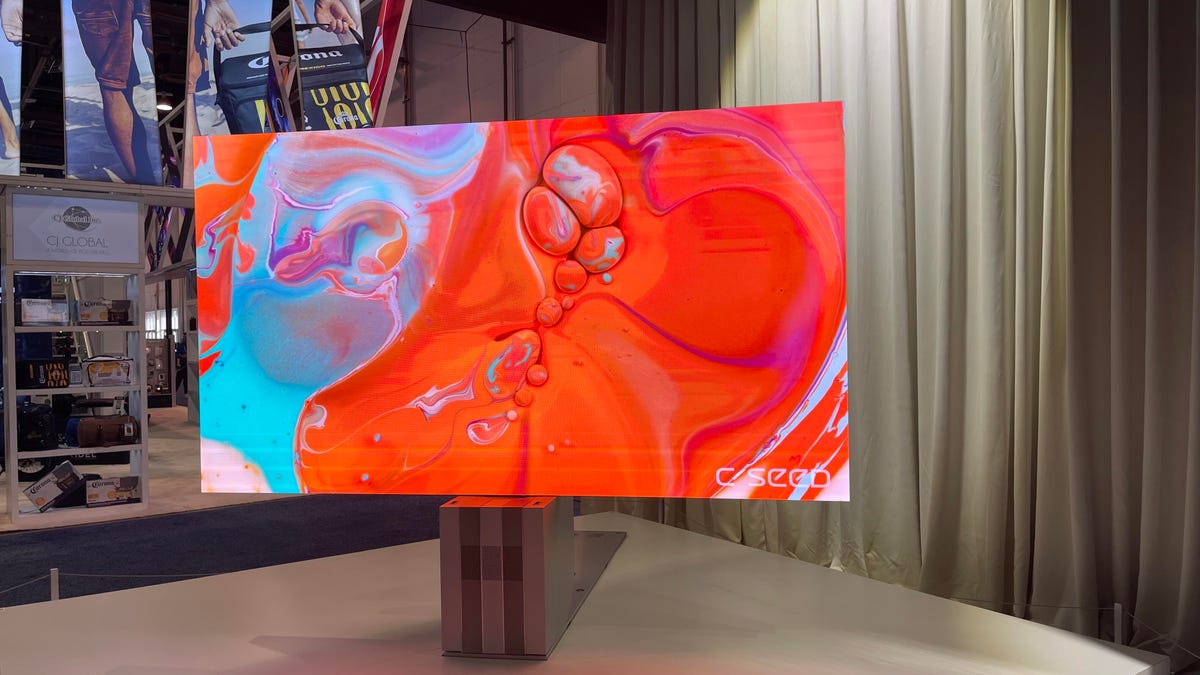This Jaw-Dropping, Foldable 137-Incher Is the Best TV You Can't Afford
It's $200,000, and only a handful have been produced around the world.

The C Seed N1, unfolded.
In my two decades as CNET's TV reviewer, I have seen a lot of TVs -- but nothing like this. C Seed makes incredibly expensive custom-built televisions for the ultra-wealthy, and the N1 is its latest offering. The 137-inch version I saw at CES 2024 is one of two N1 models in existence.
The most incredible thing about the N1 is the way it folds into a compact rectangular chunk when not in use. Press a button and the screen divides into parts that slowly butterfly together, then descend into the rectangle, hiding the screen entirely -- a process that takes about 2 and a half minutes. The folded N1 looks more like a solid metal bench than a TV.
The N1, that silver rectangle in front of the window, looks nothing like a TV when it's folded up.
Unfolded, the N1 has a stunning, bright, seamless picture, and the screen can rotate 180 degrees. The divisions between the different sections of the screen were invisible to my eye. That's because the company uses a proprietary system it calls Adaptive Gap Calibration. It automatically measures the distance between the edges, uses sensors to detect offsets and calibrates the brightness of adjacent LEDs. I couldn't detect any seams in the image.
The TV uses micro-LED technology, the same display tech found on Samsung's The Wall -- another massive, super-expensive TV that happens to be C Seed's major competitor. C Seed says the gigantic 4K resolution screen can achieve 4,000 nits peak brightness, with HDR and wide color gamut. In my brief viewing time with C Seed's demo material, the picture quality looked great. As with The Wall, I could discern individual pixels when I was very close to the screen, but from any normal seating distance, the image looked smooth and sharp.
C Seed makes other huge folding TVs. The company rep told me C Seed has sold around 200 units in the 10 years it has been in business, each one custom-built. Clients typically wait six months between ordering and delivery. The 137-inch indoor N1 costs $200,000, a price that includes installation and setup, and the outdoor version is $240,000. If you're so inclined, you can order a 165-inch ($300,000) or a 103-inch ($110,000) version instead.
Normally, this is the part when I say I look forward to reviewing a TV in CNET's lab -- but in this case, that's not gonna happen.

